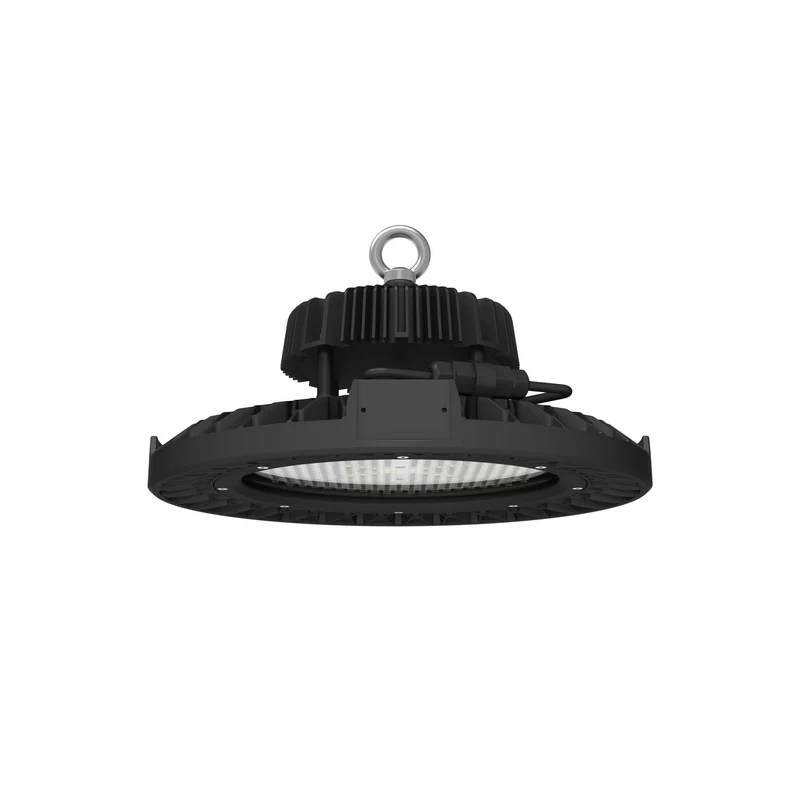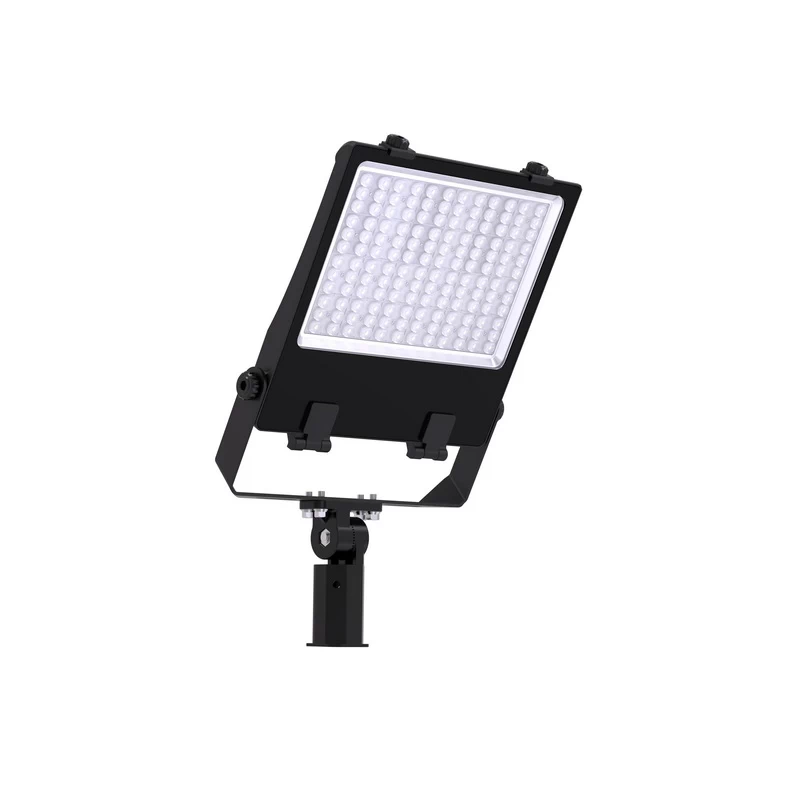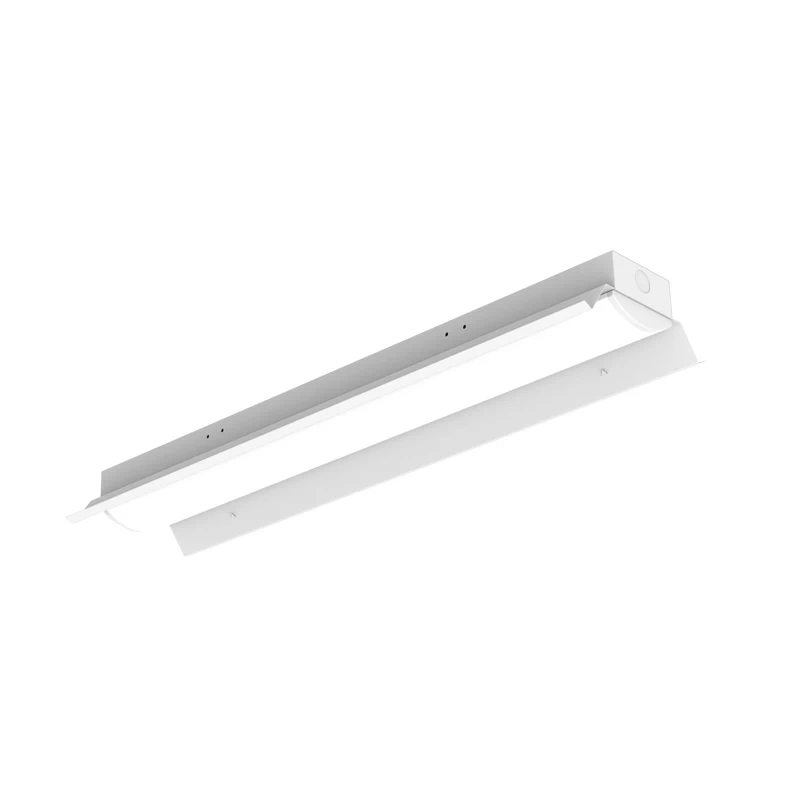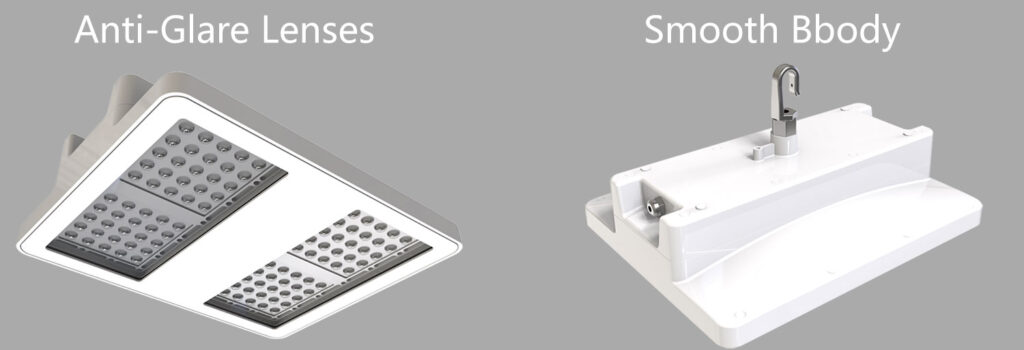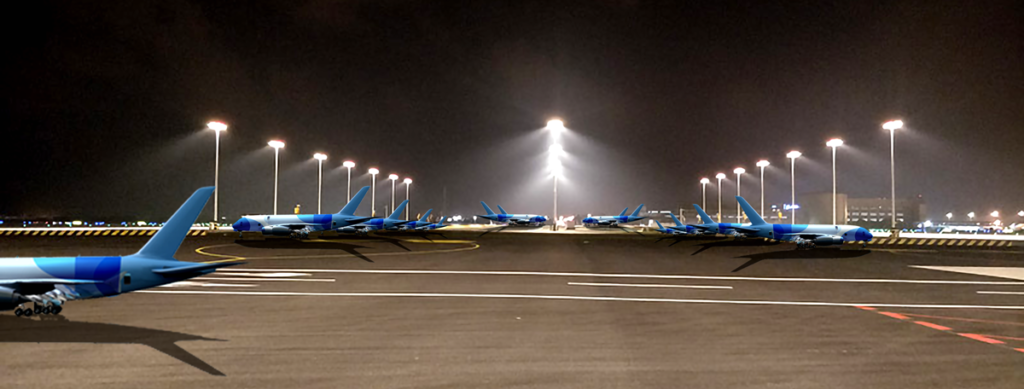목차
토글1. 소개
LED 조명은 주거용 및 상업용 조명 솔루션으로 널리 사용되고 있습니다. 에너지 효율이 높고 수명이 길며 환경 친화적이기 때문입니다. 하지만 다른 기술과 마찬가지로 때때로 LED 조명이 작동하지 않을 수 있습니다. 이 종합 가이드에서는 LED 조명이 작동하지 않는 일반적인 이유, LED 조명을 고치는 방법, 향후 문제 발생을 방지하는 방법을 살펴봅니다.
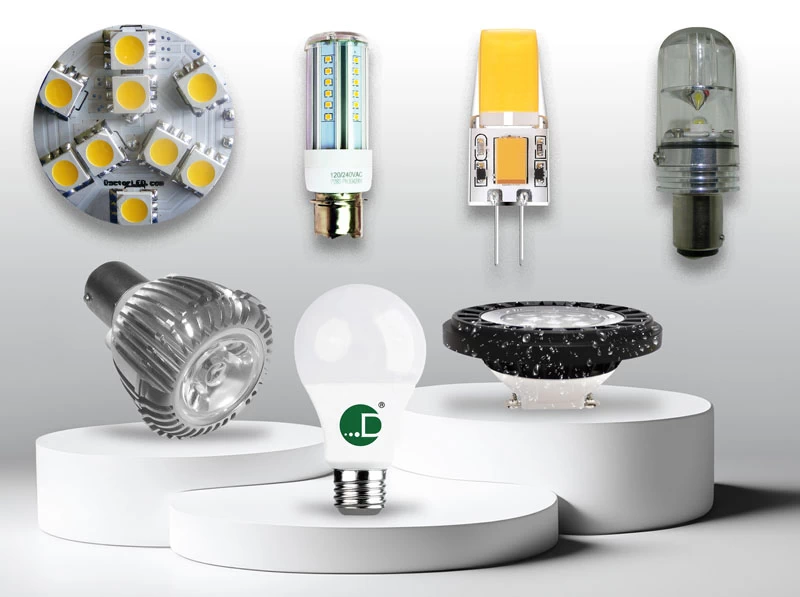
2. LED 조명이 켜지지 않는 이유
LED 조명은 신뢰성과 내구성이 뛰어나다는 평가를 받지만, 아무리 좋은 시스템이라도 간혹 고장이 발생할 수 있습니다. 다행히도 이러한 문제의 대부분은 약간의 문제 해결과 기술적 노하우로 해결할 수 있습니다.
LED 조명이 작동하지 않는 경우 여러 가지 요인이 작용할 수 있습니다. 원인을 파악하는 것이 문제 해결의 첫 번째 단계입니다. 다음은 LED 조명이 예상대로 작동하지 않는 일반적인 이유입니다:
LED 조명은 작동하지 않지만 전원은 공급되는 이유는 무엇인가요?
- 내부 드라이버 전원 장애: LED 조명은 AC 전원을 DC로 변환하고 전압과 전류를 안정화하기 위해 드라이버가 필요합니다. 드라이버 고장은 조명 고장의 가장 흔한 원인 중 하나입니다.
- LED 비드 또는 칩이 타버린 경우: 과전압, 과열 또는 품질 문제로 인해 하나 이상의 LED 비드/칩이 손상되면 램프 전체 또는 일부가 불을 밝히지 못할 수 있습니다.
- 회로 연결 문제: 램프 내부의 전선이나 납땜 접합부가 느슨해지거나 납땜이 제대로 되지 않거나 산화되거나 파손되어 전류가 제대로 흐르지 않을 수 있습니다.
- 조명 베이스 또는 커넥터의 접촉 불량: 전구와 소켓 사이, 라이트 스트립과 커넥터 사이 또는 램프와 전원 코드 사이의 접촉 지점에 산화, 느슨해짐 또는 이물질이 있어 전기 전도도가 떨어질 수 있습니다.
문제 해결 제안: 먼저 같은 종류의 램프(전구 등)를 교체하거나 스위치/조광기의 상태를 확인하고, 그래도 문제가 해결되지 않으면 회로 연결을 확인하거나 내부 드라이버/램프 고장을 고려해 보세요. 복잡한 램프나 회로 수리가 필요한 램프의 경우 전문 전기 기술자의 도움을 받는 것이 좋습니다.

2.1 이유 1: 전원 공급 장치 결함
LED 조명이 작동하지 않는 가장 흔한 원인 중 하나는 전원 공급 장치 결함입니다. LED 조명이 제대로 작동하려면 특정 전압이 필요하며, 전원이 제대로 공급되지 않으면 조명이 켜지지 않거나 깜빡일 수 있습니다.
- LED 조명이 켜지지 않는 이유는 무엇인가요? - 전원 공급 장치가 호환되지 않거나 고장났기 때문일 수 있습니다.
- 저전압 조명이 작동하지 않는 이유는 무엇인가요? - 저전압 시스템은 특히 전원 문제가 발생하기 쉽습니다.
2.2 이유 2: 잘못된 설치
잘못 설치하면 LED 조명이 제대로 작동하지 않을 수 있습니다. LED 조명을 사용하든 스트립 조명을 사용하든 모든 것이 안전하고 올바르게 연결되었는지 확인하는 것이 중요합니다.
2.3 이유 3: 과열
LED 조명은 에너지 효율이 높도록 설계되었지만 부적절하게 사용할 경우 과열될 수 있습니다. 과열로 인해 LED가 더 빨리 소손되거나 전혀 작동하지 않을 수 있습니다.
- LED 조명 스트립이 화재를 일으킬 수 있나요? - 드물기는 하지만, 환기가 제대로 되지 않거나 부적절한 전원과 함께 LED 조명 스트립을 사용할 경우 과열되어 화재 위험이 발생할 수 있습니다.
- 매입형 LED 조명이 계속 타버리는 이유는 무엇인가요? - 환기가 잘 되지 않으면 매립형 LED 조명이 과열되어 수명이 단축될 수 있습니다.
2.4 이유 4: 연결 상태 불량
연결이 느슨하면 LED 조명이 깜빡이거나 전혀 작동하지 않을 수 있습니다. 이는 특히 LED 조명 스트립이나 LED 매입형 조명에서 흔히 발생합니다.
- LED 천장 조명이 깜빡이는 이유는 무엇인가요? - 전선이 느슨하거나 전원 연결 상태가 좋지 않으면 깜박거림이 발생할 수 있으며, LED 스트립에는 커넥터가 느슨해져 오작동을 일으킬 수 있습니다.
2.5 이유 5: 전압 변동
전압 변동으로 인해 LED 조명이 깜빡이거나 예상대로 작동하지 않을 수 있습니다. LED 조명은 수신하는 전력량에 민감하므로 전압이 일정하지 않으면 문제가 발생할 수 있습니다.
- LED 매입형 조명이 깜빡이는 이유는 무엇인가요? - 변동하는 전압이 LED 깜박임의 원인인 경우가 많습니다.
- 모든 조명기구에 LED 전구를 사용할 수 있나요? - 많은 LED 전구가 다양한 조명기구와 호환되지만, 조명기구가 올바른 전압을 제공할 수 있는지 확인하는 것이 중요합니다.
2.6 이유 6: 색상 문제
때로는 조명이 켜지는 것이 문제가 아니라 조명의 색상이나 강도가 문제인 경우도 있습니다.
- 일부 LED 조명의 색이 다른 이유는 무엇인가요? - 다이오드 결함부터 전원 공급 불량까지 다양한 요인으로 인해 발생할 수 있으며, 전원 공급이 일정하지 않거나 다이오드가 손상되면 LED 조명의 색상이 다르게 표시될 수 있습니다.
- 파란색 LED 표시등은 무엇을 의미하나요? - 파란색 표시등은 연결 문제 또는 LED 드라이버에 문제가 있음을 나타낼 수 있습니다.
3. 내 LED 조명은 어떻게 되나요?
3.1 LED 표시등이 계속 깜박입니다.
깜박이거나 깜박이는 LED 표시등은 성가실 수 있으며 더 심각한 문제를 나타낼 수 있습니다. 전원 공급 장치 불량, 잘못된 설치, 조광 스위치 결함 등 여러 가지 요인으로 인해 LED 표시등이 깜박일 수 있습니다.
- LED 매입형 조명이 깜빡이는 이유는 무엇인가요?
매립형 조명 또는 LED 천장 조명은 전압 변동이나 배선 느슨함으로 인해 깜빡이는 경우가 많습니다. 이러한 조명은 특히 전류 변화에 민감합니다. - LED 스트립 조명이 깜박이는 이유는 무엇인가요?
불안정한 전원에 연결하거나 결함이 있는 드라이버를 사용하는 경우 LED 스트립 조명이 깜박일 수 있습니다. LED 스트립 조명에 과부하가 걸린 경우에도 이 문제가 발생할 수 있습니다. - LED 스트립 표시등이 깜박이는 것은 배선 문제로 인해 발생할 수도 있습니다. 연결이 느슨하거나 손상되면 전원 흐름이 일관되지 않아 LED 조명 스트립이 불규칙하게 깜박이거나 스트로브가 발생할 수 있습니다.
솔루션:
- 전원 공급 장치를 확인합니다: 멀티미터를 사용하여 전원 공급 장치가 안정적인 전압을 제공하는지 확인하세요. 그렇지 않은 경우 교체를 고려하세요.
- 모든 배선을 고정합니다: 배선을 검사하여 모든 연결이 단단하고 안전한지 확인합니다.
- 조광기 스위치를 교체합니다: 조명이 조광기에 연결되어 있는 경우 LED 조명과 호환되는지 확인하세요. 호환되지 않는 디머를 사용하면 깜박거림이 발생할 수 있습니다. LED와 호환되는 디머 스위치를 찾아보세요.
3.2 전원이 꺼지면 LED 스트립 표시등이 파란색으로 바뀌는 경우 및 해결 방법
LED 조명 스트립은 어떻게 작동하나요? - LED 조명 스트립은 전원에 연결하면 빛을 방출하는 일련의 작은 다이오드를 통해 작동합니다. 연결이 끊어지면 고장이 발생할 수 있습니다.
켜지지 않는 LED 스트립 조명을 어떻게 고치나요? - 배선을 다시 한 번 확인하고 커넥터가 안전한지 확인하세요.
원인:
- 스위치 컨트롤 중립(가장 일반적):
회로 차단기가 활선(L)이 아닌 중성선(N)에 잘못 설치되어 라이트 스트립이 활선에 계속 연결되어 전류가 유도되는 경우가 있습니다. - 전원 공급 장치 커패시터에서 잔류 전하 방전:
품질이 낮은 전원 어댑터의 내부 커패시터는 천천히 방전되어 약한 전류를 생성합니다. - 유도 전기 간섭:
조명 스트립 근처의 고압 전력선이나 전기 제품은 전자기 유도로 인해 작은 전압을 발생시킵니다.

솔루션:
- 회로 배선을 수정합니다:
스위치가 활선(L) 와이어를 제어하는지 확인합니다. 이는 전기 기술자가 전압 테스터를 사용하여 점검하고 조정해야 합니다. 자격을 갖춘 전문가 없이 이 작업을 수행하지 마세요. - 고품질 전원 공급 장치로 교체하세요:
커패시터의 잔류 전하를 방지하기 위해 블리더 저항이 있는 호환 전원 공급 장치를 선택하세요. - 블리더 저항기를 추가합니다:
500kΩ~1MΩ/1W 저항을 라이트 스트립과 병렬로 연결합니다. 이 작업은 전원이 꺼진 상태에서 수행해야 하며 전문적인 지식이 필요합니다. - 라이트 스트립을 간섭원으로부터 차폐합니다:
조명 스트립을 고전력 기기나 전선으로부터 멀리 떨어뜨리거나 금속 트레이로 차폐하세요.
3.3 내 LED 조명이 무작위로 색상이 변경됩니다.
LED 조명이 예기치 않게 색이 바뀌는 경우 LED 컨트롤러 또는 드라이버의 오작동일 수 있습니다. 색상 문제는 특정 색상을 발산하도록 설계된 RGBW LED 스트립 조명이나 색상 변경 LED 스트립 조명을 사용할 때 특히 불편할 수 있습니다.
- 일부 LED 조명의 색상이 다른 이유는 무엇인가요?
LED 스트립 내의 특정 다이오드가 오작동하거나 컨트롤러에 문제가 있는 경우 일관되지 않은 색상이 발생할 수 있습니다. 이는 빨간색, 녹색, 파란색, 흰색 LED가 함께 작동해야 하는 LED 스트립 조명 RGBW 구성에서 특히 자주 발생합니다. - LED 조명이 다른 색상으로 바뀌는 이유는 무엇인가요?
시간이 지남에 따라 값싸거나 결함이 있는 LED 조명은 같은 색조여야 하는 경우에도 다른 색으로 표시되기 시작할 수 있습니다. 이는 스트립에 충분한 전력이 공급되지 않는 경우에도 발생할 수 있습니다. - 파란색 LED 표시등은 무엇을 의미하나요?
경우에 따라 파란색 LED 표시등은 스트립의 색상 프로그래밍에 오류가 있거나 RGB 컨트롤러에 결함이 있음을 나타낼 수 있습니다.
솔루션:
- LED 컨트롤러를 교체합니다: 컨트롤러 오작동으로 인해 색상이 바뀐 것일 수 있습니다. 더 높은 품질의 LED 컨트롤러로 업그레이드하는 것이 좋습니다.
- 배선을 확인합니다: LED 스트립의 연결부가 단단히 고정되어 있고 전선이 닳은 곳이 없는지 확인합니다. 배선이 느슨하면 색상 순서가 흐트러질 수 있습니다.
- 적절한 전원 공급 장치를 사용하세요: 전원이 부족하면 특히 색상 변경 스트립 조명에서 색상 불일치가 발생할 수 있습니다. 전원 공급 장치가 LED 스트립의 사양과 일치하는지 확인하세요.
3.4 LED 조명이 어두워집니다.
어두운 조명은 특히 가시성이나 분위기를 위해 최대 밝기가 필요할 때 불편할 수 있습니다. 저조도 LED 성능은 전원 공급 장치 또는 조명 스트립 자체에 문제가 있음을 나타낼 수 있습니다.
LED 조명이 어두워지는 이유는 무엇인가요? 이는 저전압 LED 스트립, 전원 공급 장치 고장 또는 필요한 부하를 처리할 수 없는 품질이 낮은 커넥터 때문일 수 있습니다.
솔루션:
- 전원 공급 장치를 업그레이드하세요: LED 조명이 어두워지면 LED 스트립의 사양에 맞는 더 높은 전압의 전원 공급 장치를 사용하는 것이 좋습니다.
- 전선 길이를 줄이세요: 전선이 길면 전압 강하가 발생하여 조명이 어두워질 수 있습니다. 전선 길이를 줄이면 밝기를 유지하는 데 도움이 될 수 있습니다.
- 제대로 연결되어 있는지 확인합니다: 모든 배선과 커넥터가 단단히 고정되어 있는지 확인합니다. 연결이 잘못되었거나 느슨하면 LED에 공급되는 전력이 줄어들 수 있습니다.
3.5 LED 조명 스트립이 벽에 달라붙지 않습니다.
LED 스트립 조명의 매력적인 특징 중 하나는 다용도로 사용할 수 있고 설치가 쉽다는 점입니다. 하지만 스트립의 접착력이 좋지 않으면 LED 스트립 조명이 표면에 제대로 붙지 않을 수 있습니다.
- 벽을 손상시키지 않고 LED 스트립 조명을 걸려면 어떻게 해야 하나요?
튼튼한 용도로 설계된 양면 접착 테이프를 사용하세요. 더 나은 결과를 얻으려면 클립이나 마운팅 채널을 사용하여 스트립을 고정할 수 있습니다. - LED 조명을 벽에서 떼어내는 방법은 무엇인가요?
표면을 손상시키지 않고 LED 조명을 제거하려면 헤어드라이어로 접착제를 부드럽게 가열한 후 천천히 떼어내세요. 스트립을 직접 잡아당기면 손상될 수 있으므로 주의하세요.
솔루션:
- 고품질 접착제를 사용하세요: LED 조명 스트립을 위해 특별히 제작된 신뢰할 수 있는 접착제를 선택하세요.
- 클립을 장착해 보세요: 접착제가 잘 붙지 않을 경우 클립을 사용하여 스트립을 제자리에 고정할 수 있습니다. 클립은 특히 시간이 지남에 따라 열로 인해 접착력이 저하될 수 있는 영역에서 추가적인 지지력을 제공합니다.
3.6 LED 조명이 빨리 꺼집니다.
매입형 LED 조명이 계속 꺼지는 이유는 무엇인가요? 열 관리 불량이나 전기 서지는 LED 조명이 조기에 고장 나는 일반적인 이유입니다.
- 일반 조명기구의 LED 조명이 더 빨리 소진될 수 있나요?
LED는 기존 전구보다 오래 사용할 수 있도록 설계되었지만, 부적절하게 사용하거나 환기가 잘 되지 않으면 더 빨리 소진될 수 있습니다. - LED 조명이 빨리 소진되는 이유는 무엇인가요?
이는 과열 또는 전력 서지 때문일 수 있습니다. LED 표시등이 자주 단락되면 조기 고장이 발생할 수 있습니다.
솔루션:
- 환기를 개선하세요: 조명, 특히 매입형 조명의 통풍이 잘 되는지 확인하세요. 과열은 LED 조기 고장의 주요 원인입니다.
- 서지 보호기를 사용하세요: 적절한 서지 보호기를 사용하여 전기 서지로부터 LED 조명을 보호하세요.
| 문제 | 가능한 원인 | 권장 솔루션 |
|---|---|---|
| 깜박이거나 깜박이는 LED 표시등 | 전원 공급이 불안정하거나 배선이 느슨한 경우 | 전원을 확인하고 모든 전기 연결을 조입니다. |
| LED 조명이 켜지지 않음 | 전원 공급 장치 결함 또는 부적절한 배선 | 전원 공급 장치 및 배선 점검, 손상된 부품 교체 |
| 무작위로 색상이 바뀌는 LED 조명 | 컨트롤러 결함 또는 전원 부족 | 컨트롤러 교체 및 전원 적정성 확인 |
| LED 조명 디밍 | 전압 강하 또는 저전력 공급 | 고용량 전원 공급 장치로 업그레이드하고 배선 길이를 줄이세요. |
| 벽에 달라붙지 않는 LED 조명 | 접착력이 약하거나 표면이 준비되지 않은 경우 | 더 강한 접착 테이프를 사용하거나 장착 클립으로 고정합니다. |
| 빠르게 소진되는 LED 조명 | 과열 또는 전기 서지 | 방열 개선 및 서지 보호기 사용 |
4. 위의 내용 요약
요약하자면, LED 조명이 작동하지 않는 이유는 무엇인가요? 전원 공급 문제와 부적절한 설치부터 과열 및 전압 변동에 이르기까지 다양한 원인이 있을 수 있습니다. 이러한 문제를 해결하려면 연결 상태를 점검하고 안정적인 전원 공급을 보장하며 조명과 전구의 호환성을 확인해야 하는 경우가 많습니다.
LED 조명에 문제가 계속 발생한다면 전문가와 상담하거나 결함이 있는 부품을 교체하는 것이 좋습니다. 올바른 도구와 지식만 있으면 대부분의 LED 조명 문제를 빠르고 효율적으로 해결할 수 있습니다.
LED 조명의 가장 일반적인 고장의 원인과 해결 방법을 이해하면 조명이 앞으로도 밝고 에너지 효율적인 조명을 계속 제공할 수 있습니다.
5. LEDRHYTHM의 장점은 무엇인가요?
LED 조명의 유지관리는 시간이 많이 걸리고 노동 집약적인 작업입니다. LED 램프를 설치할 때는 사용 중 램프의 손상을 줄이는 방법을 먼저 고려해야 합니다.
우선, LED 램프를 선택하고 설치할 때 환경 요인을 충분히 고려해야하기 때문에 LEDRHYTHM의 30 명 이상의 광학 엔지니어가 고객의 적용 현장에 따라 적합한 조명 솔루션을 공식화합니다. 다양한 사용 시나리오에 따라 적합한 LED 램프를 선택합니다. 해양 또는 산업 현장과 같은 특수 환경의 경우 보호 수준과 환경 저항성이 높은 LED 램프를 선택해야 할 수 있습니다. 고온 환경, 고온 내성 조명 가 열악한 조건에서도 정상적인 작업 효과를 유지할 수 있도록 선택해야 합니다.
둘째, LEDRHYTHM 조명은 램프 본체 재질, 부속품 재질, 드라이버에 관계없이 세계적인 브랜드로 제작되어 램프의 품질로 인해 램프가 작동하지 않는 경우는 거의 없습니다.
LED 조명 문제에 대한 종합적인 분석은 조명 시스템을 최적으로 작동하도록 유지하고 LED 스트립 조명이 켜지지 않는 이유, LED 조명이 계속 색이 바뀌는 이유 등과 같은 질문에 답하는 데 도움이 되도록 설계되었습니다. 제공된 해결책을 따르면 비용이 많이 드는 수리를 피하고 LED 조명 시스템의 이점을 최대한 누릴 수 있습니다.
다른 질문이 있으시면 다음과 같이 문의해 주세요. 여기를 클릭하세요 을 클릭해 질문을 제출하세요. 영업일 기준 2일 이내에 답변해 드리겠습니다.


